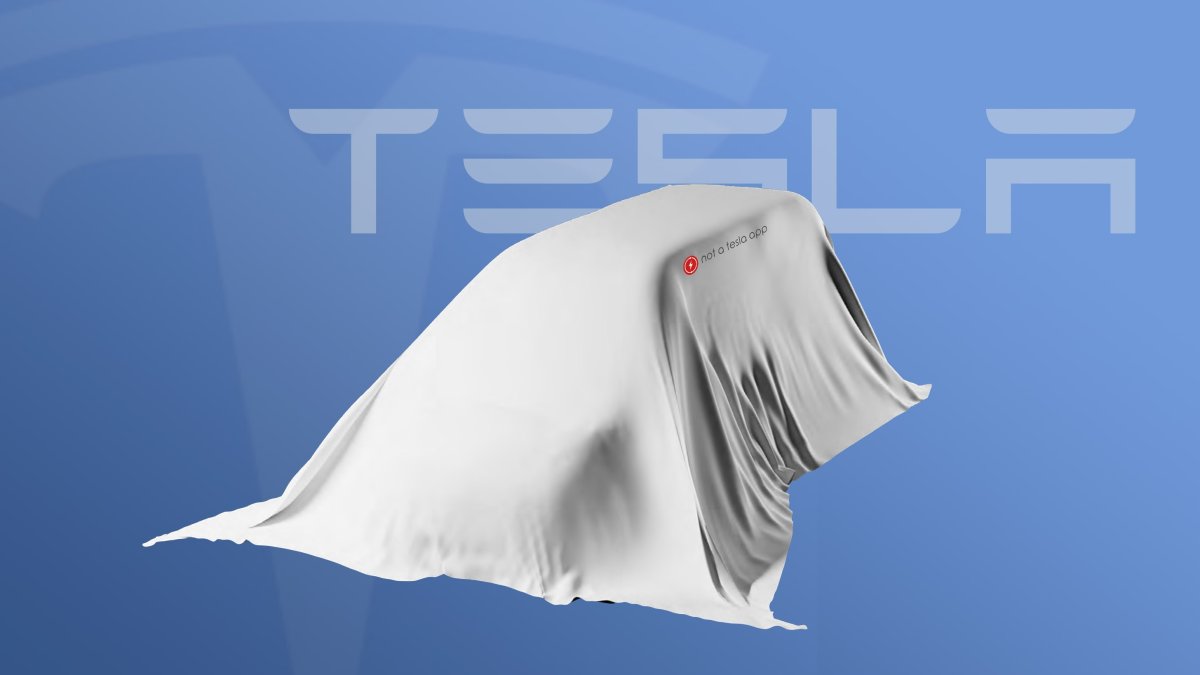향후 테슬라 차량은 양방향 충전, 48V 및 800V 아키텍처, Steer-by-Wire 등을 특징으로 합니다.

사이버트럭은 테슬라 차량에 많은 기술적 발전을 가져왔으며, 새로 출시된 Model Y가 출시된 이후에도 테슬라는 상대적으로 사이버트럭에만 집중했습니다. Tesla는 아직 다른 차량에 Cybertruck 기술의 대부분을 출시하지 않았지만, Q4 2024 Tesla Earnings Call 데크의 일부로 Tesla는 미래 차량이 현재 Cybertruck에서만 독점적으로 제공하는 기능을 활용할 것이라고 밝혔습니다.
Tesla가 Cybertruck에서 도입한 내용과 나머지 라인업에 도입할 것으로 기대하는 내용을 살펴보겠습니다.
Cybertruck 전용 기능
Cybertruck에서만 독점적으로 제공하는 기능이 두 가지 있지만, 이는 놀라운 일이 아닙니다. all.
스테인리스 스틸 엑소스켈레톤 - Cybertruck의 냉간 압연 스테인리스 스틸 엑소스켈레톤은 독특하고, 튼튼하며 무겁습니다. 그리고 그 무게는 다른 차량 클래스보다는 트럭에 더 적합합니다. 따라서 Tesla가 CyberSUV를 실제로 계획하지 않는 한, 다른 유형의 차량에 이를 도입할 가능성은 낮습니다.
에어 벤딩 제조 공정 - 냉간 압연 스테인리스 스틸 엑소스켈레톤과 관련하여 Tesla는 스테인리스 스틸을 만지지 않고도 구부릴 수 있는 독특한 에어 벤딩 공정을 활용합니다. 이러한 굽힘은 Tesla가 Cybertruck의 독특하고 독특한 모양을 만드는 방법입니다.
향후 모델에 사용될 Cybertruck 기술
그렇게 말씀드렸으니, Tesla가 향후 모델에 사용될 것이라고 말한 기능으로 넘어가겠습니다. Model Y는 이미 출시되었고 이러한 기능이 포함되어 있지 않으므로, 차세대 모델인 Cybercab과 Tesla의 출시 예정인 버스와 같은 새로운 차량에 이러한 기능이 포함될 가능성이 있다고 예상합니다. Tesla는 단순성을 위해 재설계된 Model Y에서 이러한 기능을 제외했을 가능성이 있지만, 이러한 기능의 대부분이 Tesla의 미래를 정의할 것으로 예상됩니다.
제조 및 설계
기가 캐스팅 - Model Y는 6,000톤 기가프레스를 사용하여 캐스팅을 제작하는 반면, Cybertruck은 9,000톤 프레스를 사용하여 전면 및 후면 차량 구조를 만듭니다. 이렇게 하면 부품 수와 최종 조립 복잡성이 줄어들어 비용을 절감할 수 있고, 수리 가능성도 더 높은 차량이 탄생합니다.
차체 구조와 통합된 오디오 - 흥미롭게도, Giga Castings는 실제로 Cybertruck의 서브우퍼에서 나오는 소리를 전달하도록 설계되었습니다. 반응성 볼륨으로, 오디오를 차량 승객에게 전달하여 선명도와 응답성을 개선하는 데 도움이 됩니다.
파워트레인 및 전기 아키텍처
48V 전기 아키텍처 - Cybertruck의 48V 저전압 아키텍처는 독특하며 차량 내 전기 배선의 전체 비용을 줄여줍니다. 이는 기존 12V 배선에 비해 필요한 전류가 4배 감소하고 생성되는 열이 16배 감소하기 때문입니다. 전반적으로 이는 무게 감소, 전기 시스템 간소화, 에너지 효율성 증가를 의미합니다.
800볼트 배터리 시스템 - 고전압 측면에서 Tesla는 더 높은 전압 파워트레인을 사용하고 있습니다. 이는 더 많은 전력이 필요한 대형 차량에 더 에너지 효율적입니다. 저전압 대응 제품과 마찬가지로 이 새로운 시스템은 더 작은 케이블, 더 적은 열 생성을 가능하게 하며 전기 배선 비용을 절감합니다. 이를 통해 Cybertruck은 325kW 슈퍼차징이 가능한 최초의 Tesla가 될 수 있으며, 곧 빠른 500kW가 될 수 있습니다.
Etherloop 통신 아키텍처 - 새로운 저전압 아키텍처는 LVCS를 통한 통신도 가능하게 합니다. - 또는 저전압 커넥터 표준 - 테슬라가 배선을 최적화하기 위해 도입한 새로운 산업 표준입니다. LVCS는 차량 전체에서 통신을 가능하게 합니다. 즉, 대화형 배선 다이어그램을 만들 수도 있습니다. 이를 통해 자동으로 fau기술자가 교체할 올바른 커넥터를 찾는 데 도움이 됩니다.
양방향 충전(Powershare) - Powershare는 Tesla의 양방향 충전으로, Vehicle-to-Load(V2L) 또는 Vehicle-to-Home(V2H)이라고도 합니다. Tesla가 Cybertruck 외의 차량에 Powershare를 도입할 계획이라고 확인한 것은 이번이 처음이며, 이는 흥미로울 것입니다. 즉, 정전 시 다른 Tesla 차량을 사용하여 집에 전력을 공급하거나 도구나 캠핑 장비에 전력을 공급할 수 있습니다. 전력망에 가까이 있지 않을 때는 다른 모든 것에 전력을 공급할 수 있습니다.
주행 및 편안함
맞춤형 라미네이트 유리 - Tesla는 Cybertruck의 앞유리, 측면 창문, 작은 뒷창에 새로운 라미네이트 유리를 포함했습니다. 이 적층 창문은 소음 차단을 개선하는 데 도움이 되며, 차량을 시원하게 유지하는 데 도움이 되는 자외선 스펙트럼을 상당히 차단합니다.
적응형 에어 서스펜션 - Cybertruck의 적응형 에어 서스펜션은 놀랍게도 12”의 지상고를 제공합니다. Model S와 Model X에도 적응형 에어 서스펜션이 있지만, 이 Cybertruck의 서스펜션은 특히 거친 지형에서 오르내릴 때 더 부드럽고 편안합니다. Tesla의 라인업에 더 많은 에어 서스펜션이 포함되기를 바랍니다. 모든 모델에 적용되지는 않지만, 더 높은 가격대에 포함되거나 Tesla의 차기 버스에 포함될 수 있습니다.
Steer-by-Wire - Steer-by-wire는 이해하려고 노력해야 하는 Cybertruck 기능입니다. 이 기능은 차량 속도에 따라 조향 비율을 자동으로 조정하는 전자식 컬럼으로 일반 스티어링 컬럼을 완전히 대체합니다. 이 기능은 48V 저전압 시스템으로 가능해졌기 때문에 향후 차량에서 이 기능을 볼 수 있기를 기대합니다. 저속에서는 휠을 돌리는 데 훨씬 적은 움직임이 필요하지만 고속에서는 그 반대입니다. 이는 특히 다음 기능과 결합할 때 매우 편안하고 조종하기 쉽습니다.
후륜 조향 - Cybertruck의 주행 방정식의 두 번째 절반은 후륜 조향입니다. 저속에서 회전을 개선할 수 있습니다. 트럭에 기대했던 것보다 훨씬 더 좁고, 훨씬 짧은 Model 3 및 Model Y와 더 비슷합니다. 게다가 차선을 변경할 때 크래빙하여 고속에서 차량 안정성도 높입니다.
특징
미래 차량에서의 사용
스테인리스 스틸 외골격
-
공기 굽힘 제조
공정
-
기가 캐스팅
✅
차체와 통합된 오디오
구조
✅
48볼트 전기 구조
✅
800볼트 배터리 시스템
✅
Etherloop 통신
아키텍처
✅
양방향 충전(파워셰어)
✅
맞춤형 라미네이트 유리
✅
적응형 에어 서스펜션
✅
스티어 바이 와이어
✅
후륜 조향
✅
정리
사이버트럭 자체가 모든 사람에게 어필하는 것은 아니지만, 그 안에 들어간 기술은 획기적입니다. 테슬라는 이러한 기능을 어떤 차량에 사용할지 또는 일부 기능이 고급 차량에 사용될지 정확히 밝히지 않았지만, 대부분의 차량이 비용을 절감하고 더 빠른 충전을 가능하게 하는 이러한 새로운 시스템을 활용할 것으로 예상합니다.
우리는 2025년에 어떤 일이 일어날지 기대하고 있습니다. 다음은 Project Redwood입니다. 테슬라의 저렴한 자동차 모델로 올해 상반기에 출시될 예정입니다. 이러한 기능 중 어떤 것이 사용될 것이라고 생각하십니까? 소셜 미디어나 포럼을 통해 알려주세요.


